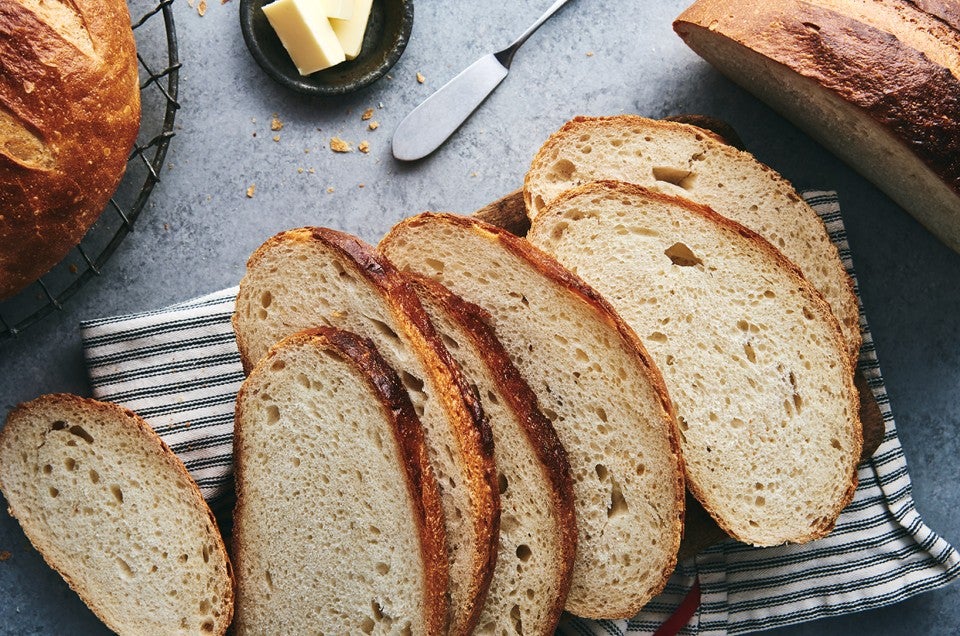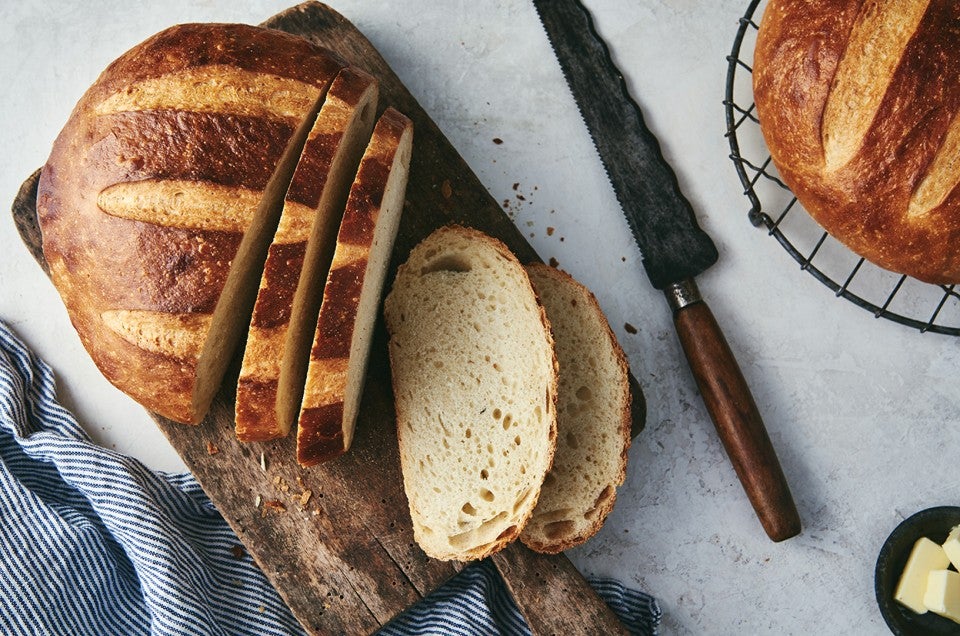Merlin's Magic Sourdough Bread
This finely textured bread will stay fresh longer than most loaves you'll make, due to both the olive oil and the sourdough starter: Breads higher in acid retain moisture better than less acidic loaves.

This finely textured bread will stay fresh longer than most loaves you'll make, due to both the olive oil and the sourdough starter: Breads higher in acid retain moisture better than less acidic loaves.





The day before: Weigh your flour; or measure it by gently spooning it into a cup, then sweeping off any excess. Mix together the starter, water, and 3 cups (362g) of the flour. Cover with a damp towel, and let this sponge sit at room temperature for 2 hours; and then in the refrigerator overnight, or for up to 16 hours.
The next day: Add the yeast, salt, oil, and enough of the remaining 2 1/2 cups of flour (up to 298g) to make a soft dough that cleans the sides of the bowl. Turn the dough out onto a lightly floured or oiled work surface, and knead it, adding more flour as necessary, until it's smooth and springs back when you poke it. If the dough feels too stiff, add a few more teaspoons of water to soften it.
Place the dough in a lightly greased bowl, cover it with lightly greased plastic wrap, and let it rise for 2 hours at moderate room temperature (below 80°F or so). The dough should become puffy.
Press the dough down and divide it into two pieces. Form each piece into a round ball, and place each ball on a baking sheet that has been greased and sprinkled with cornmeal. Cover the loaves with damp towels or lightly greased plastic wrap, and allow them to rise for 1 hour (or more), or until they've become puffy and a pressed finger leaves a mark.
While the loaves are rising, preheat the oven to 425°F.
Use a sharp knife or lame to make three slashes on the top of each loaf, which helps the bread to rise evenly in the oven. Bake for about 25 to 30 minutes, or until the bread is golden, sounds hollow when tapped, and the internal temperature of the loaf is 190°F to 205°F on a digital thermometer.
Remove the bread from the oven, and cool completely on a rack.
Store loosely wrapped in plastic for 3 days, or wrap tightly and freeze for up to 3 months.
Don’t have any starter? Here’s a recipe for homemade sourdough starter. If you're making it from scratch, you'll need to feed it for 5 to 7 days before it’s ready for baking. Want a head start? Purchase our classic fresh sourdough starter — it’ll be ready for baking soon after it arrives at your door. Looking for tips, techniques, and all kinds of great information about sourdough baking? Find what you need in our sourdough baking guide.

View our privacy policy

